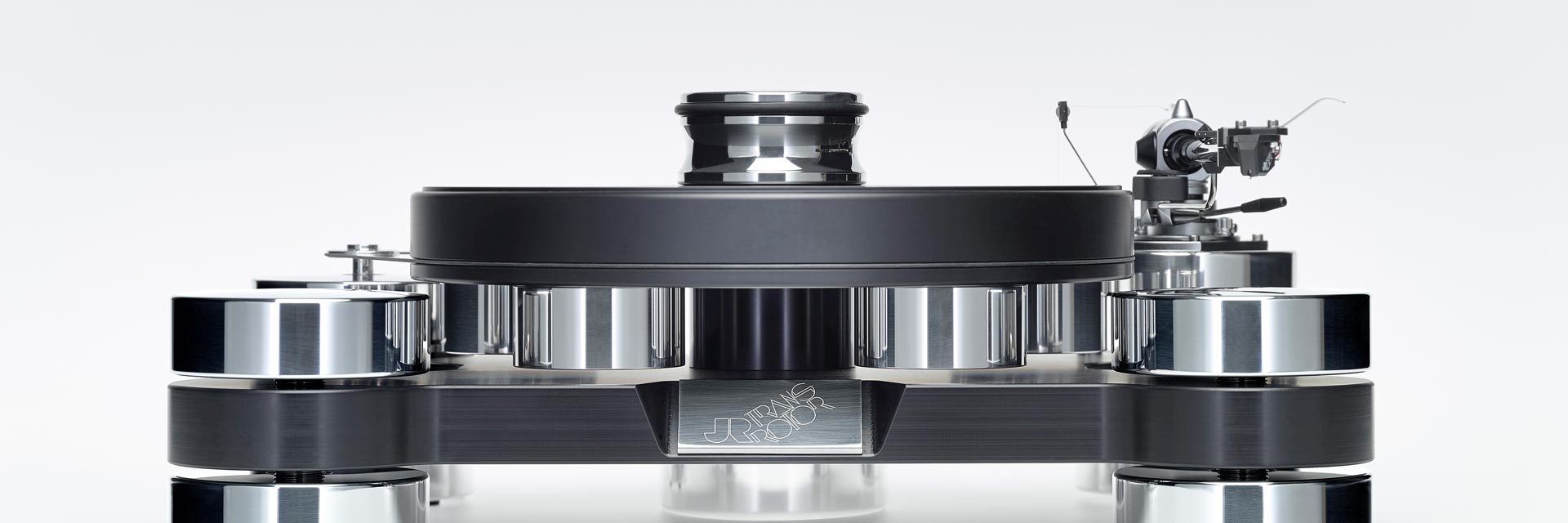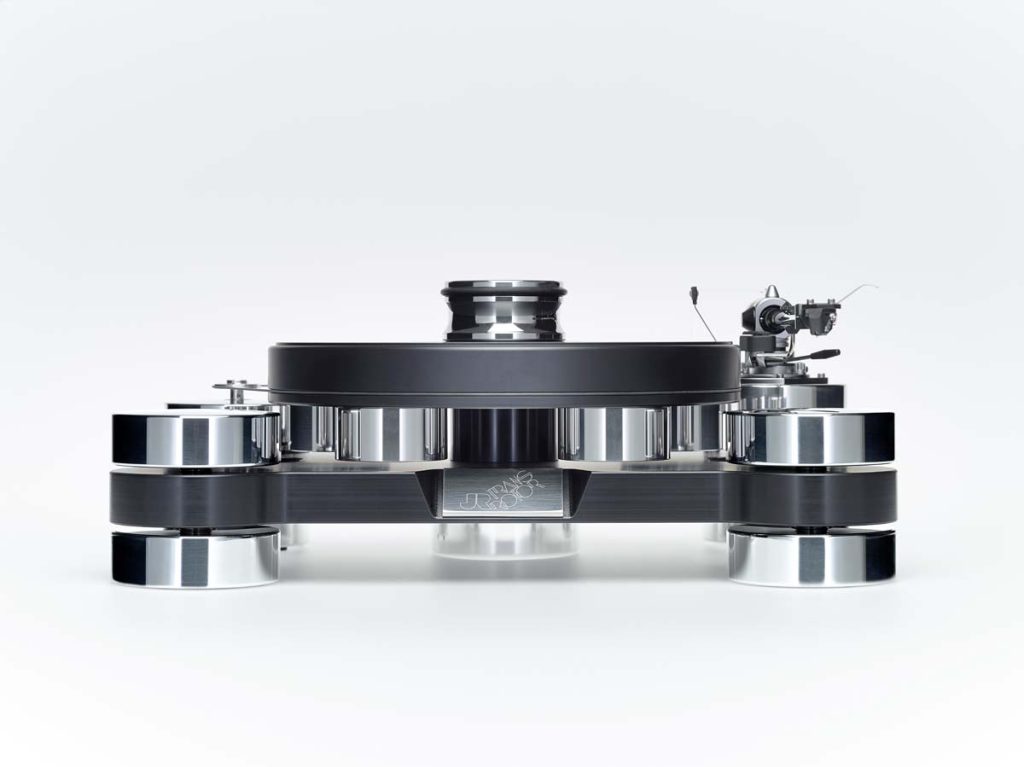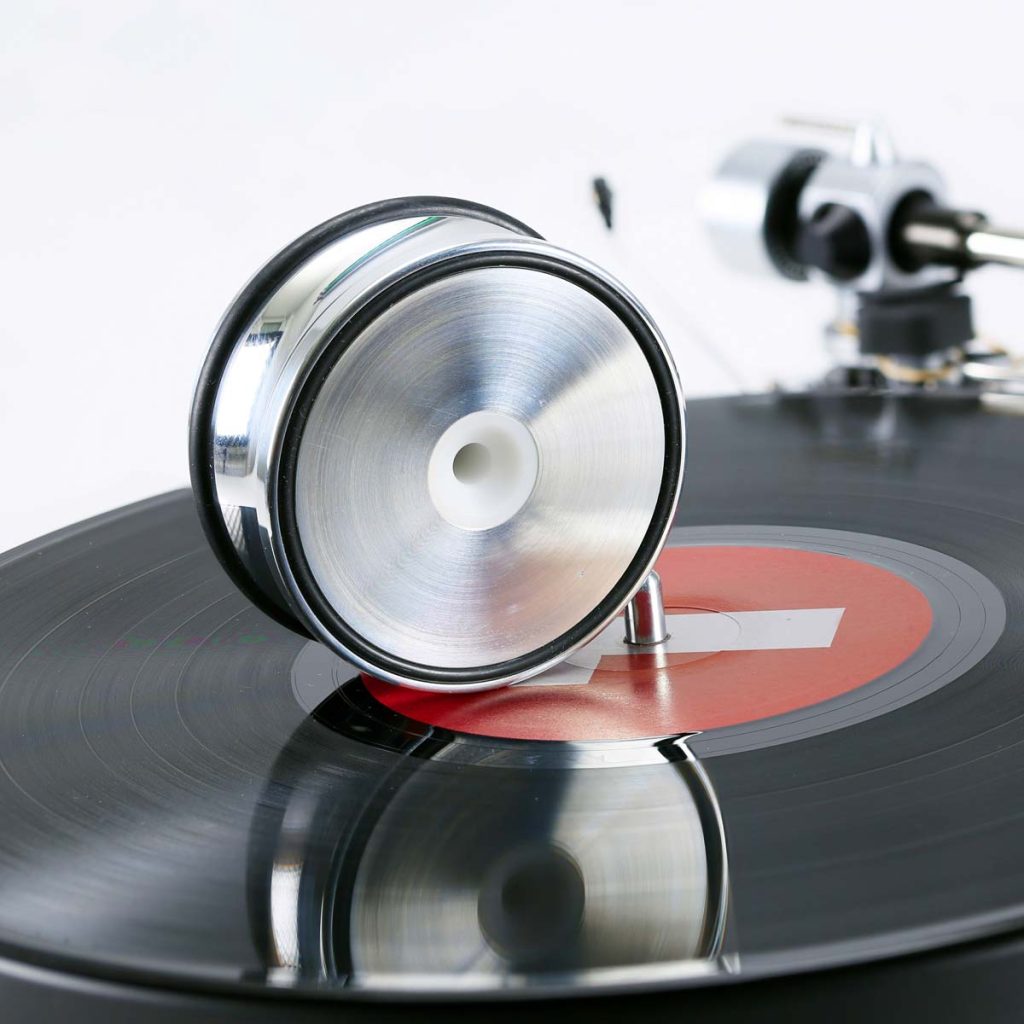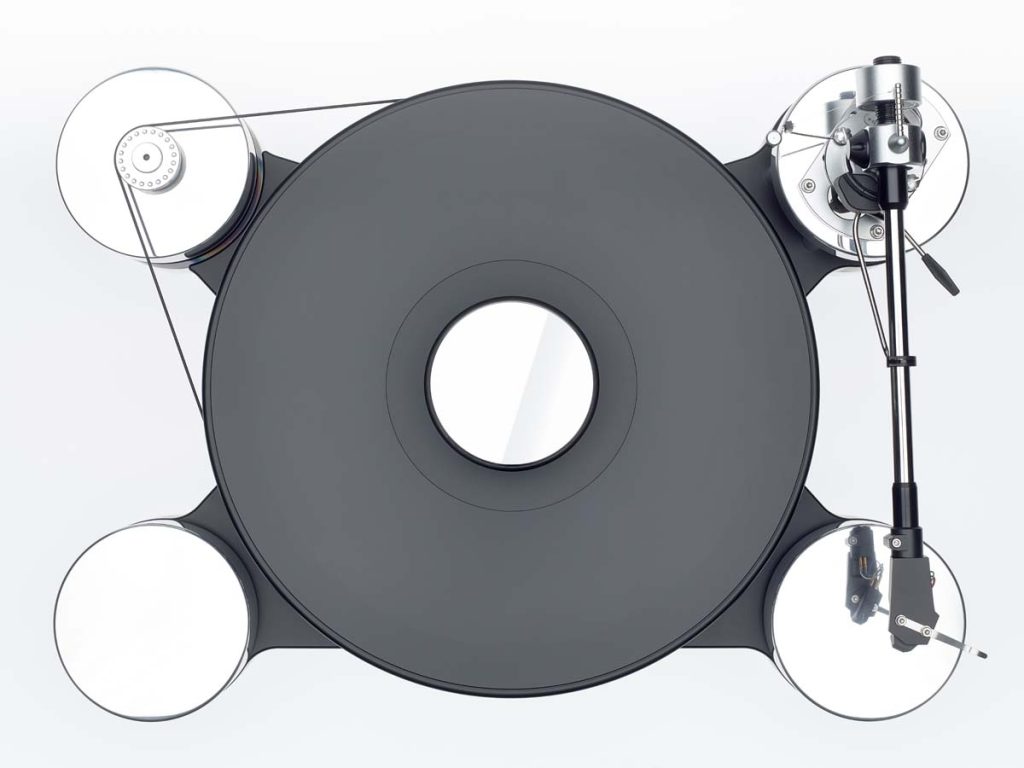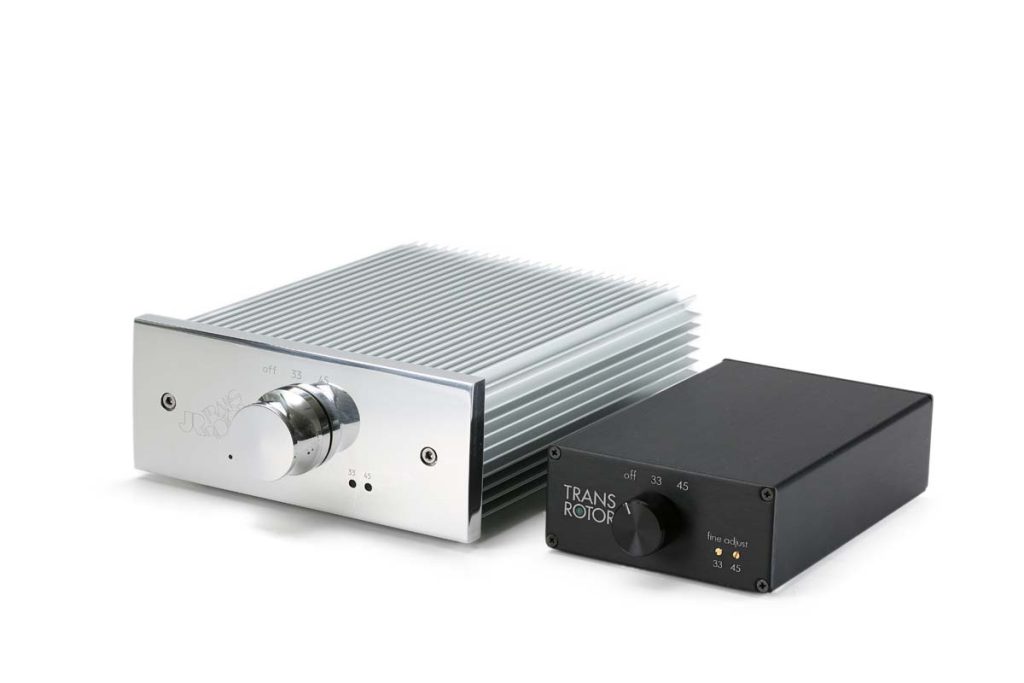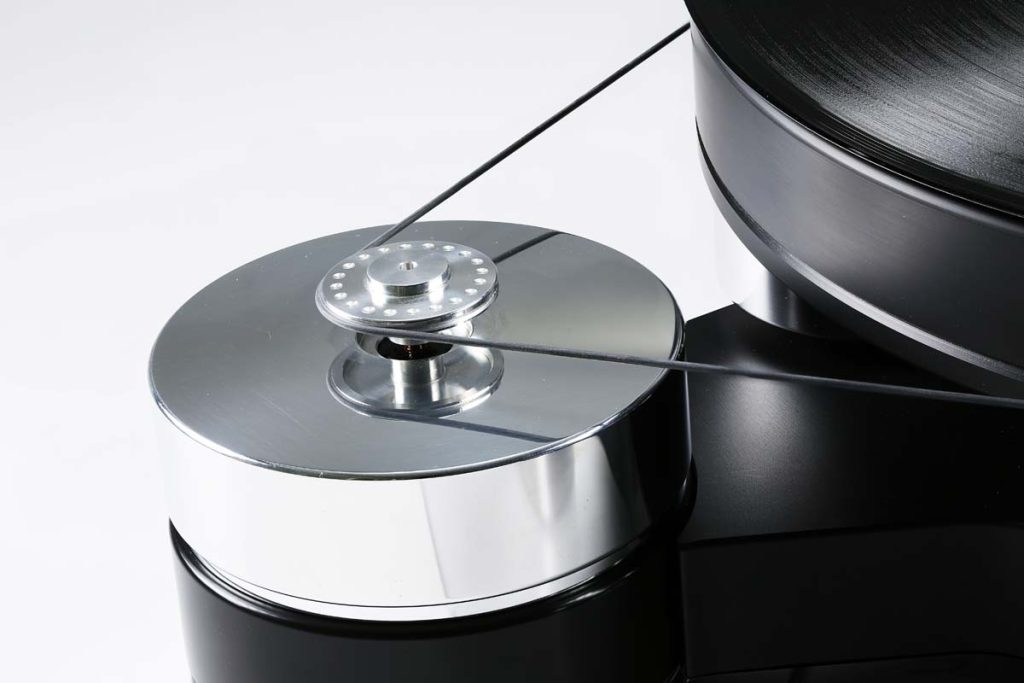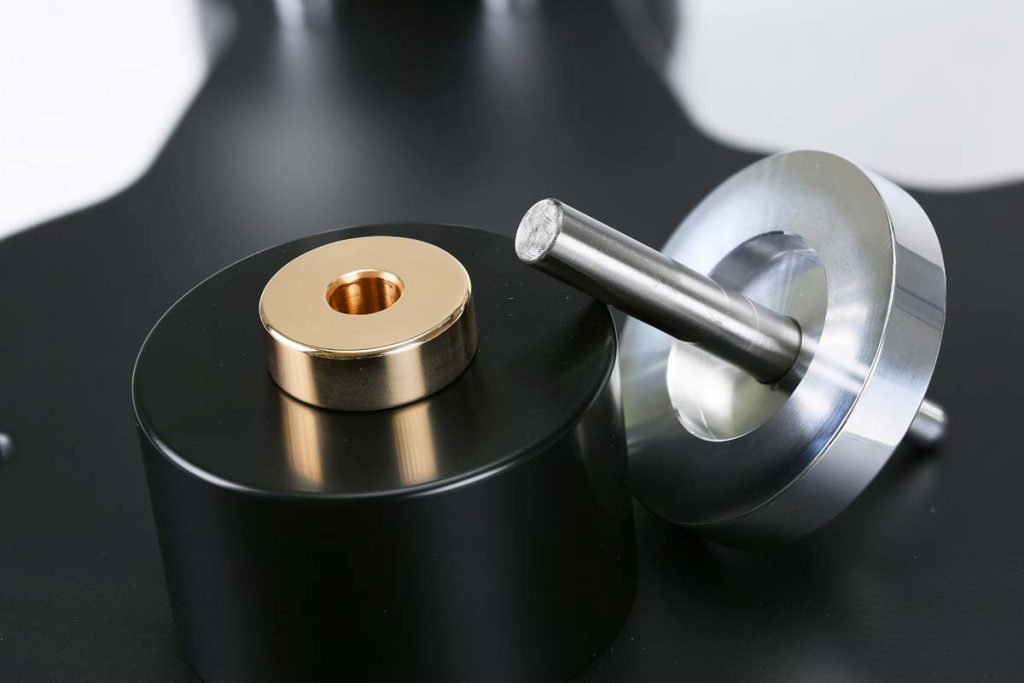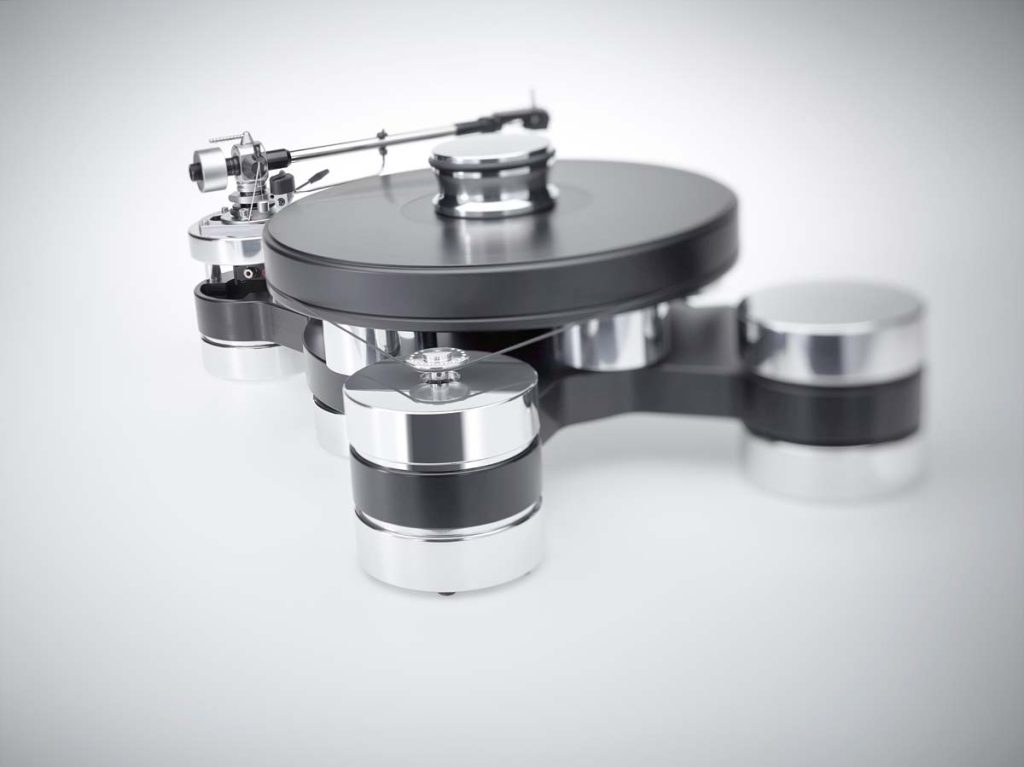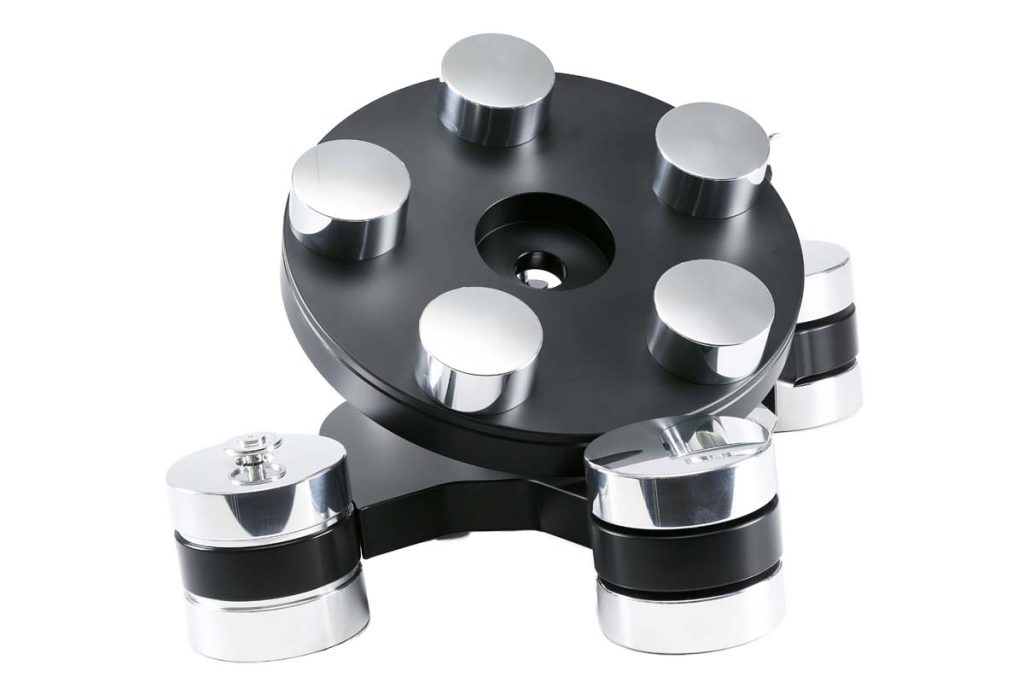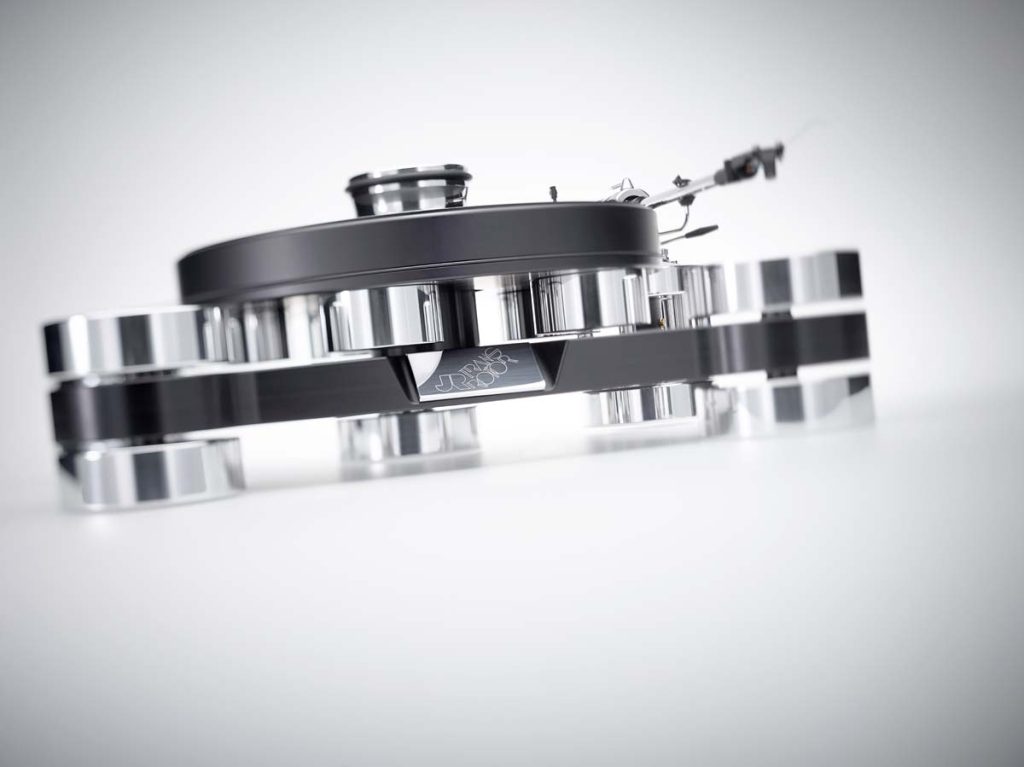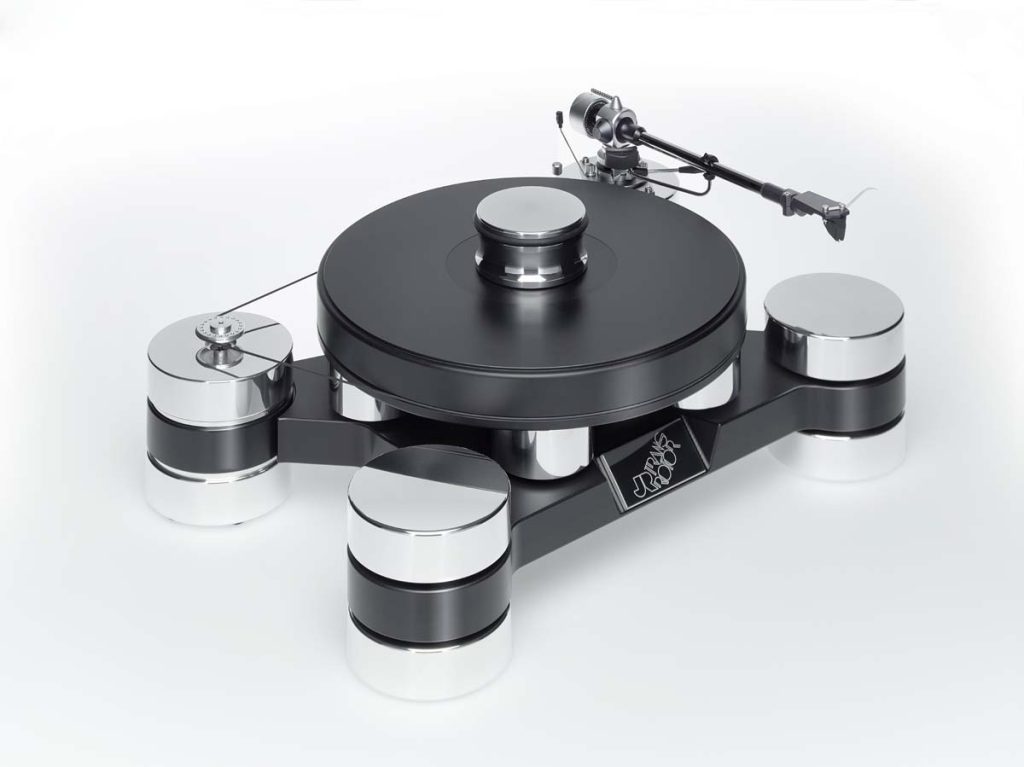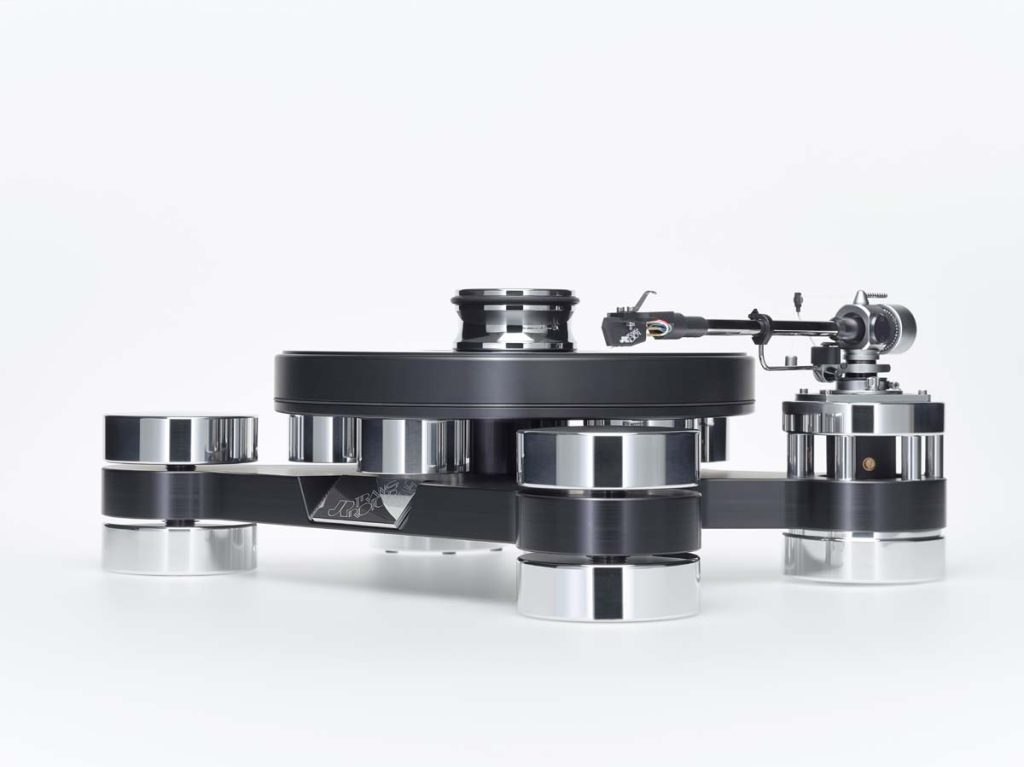Quality Stands The Test Of Time
Listeners of the German radio station WDR will be familiar with the slogan, which Transrotor seems to have invented. The Transrotor Dark Star Silver Shadow is a recent addition to a family that seems like it has been around forever.
Transrotor has always played a significant role, at least in my audiophile educational journey. As a schoolboy, I would press my nose flat against the window of the local hi-fi store every time I saw a music connoisseur spotlighted inside the store spinning a disk. A few years later, when I used to top up my pocket money by working in that very same store preassembling cables or sometimes even advising customers, I’d take one of my favorite vinyls I’d brought from home and pop it on a connected Transrotor whenever I found myself alone in the store and lose myself in the music for a while.
I’ve toyed with other brands, but none of them has ever really excited me the same way and so I’ve had a Transrotor firmly by my side for a good 15 years now to listen to vinyls. Admittedly, some great machines have come for short visits and looked like they could challenge the Transrotor in a few areas or even beat it. Overall, however, this stellar turntable’s place has never truly been threatened, and there are several reasons why. First and foremost, it boasts a transparent, stable sound, which generally exercises impressive restraint and ensures all my vinyls sound incredibly different. Plus, it provides a neutral basis for all tonearms and pickups, which is very useful when writing articles such as this one. If, as a listener, you’re not after a special or particular sound but simply want to delve into listening to your precious vinyls and hear how they’re supposed to sound without any waters being muddied, then Transrotor has to be up there at the top of your list.
In addition, there’s hardly an arm I haven’t managed to mount on it. No matter whether it’s a 9-inch or 12-inch arm and no matter the geometry, everything is easily adjustable using standard tools. And the device’s open architecture allows you to mount even longer bases, for example those for 14-inch arms, or particularly short and wide bases for tangential arms. The Transrotor is open to everything and can work with anything. In my opinion, this is a great quality.
And then there’s the option to update the turntable over time with the latest developments. The fact that certain dimensions (platter diameter, bearing support and height, motor height and motor) are standardized at the company means you can, for example, switch or upgrade to a better bearing or another platter if you want to. I’ve always experienced an audible improvement in quality every time I’ve enhanced my vinyl turntable with one of Transrotor’s latest developments. The TMD (Transrotor Magnetic Drive) bearing, for example, provided more precision dynamics and a stiller background, the new power supply extra stability and focus, and the modified platter a more defined fundamental tone and an increased sense of space. All improvements that, thanks to the standardized dimensions, were possible for me to experience by simply swapping one part for another without taking everything apart. Transrotors grow and develop over time, which at least puts their hefty initial purchase price into perspective. While definitely high, it certainly no longer presents an anomaly in comparison with other brands. Twenty-five years ago, Transrotor and a handful of exotic brands represented the top end of the market in terms of price. But these days, it’s clear the prices of Jochen and Dirk Räke’s products haven’t risen as quickly as those of their competitors: Most of the turntables developed by the company based in the western part of Cologne are more moderately priced.
The Dark Star Silver Shadow, which is the subject of this article, has been around for a few years now. It’s nevertheless worth a closer look as it occupies a unique position within the company’s product range due to its base material. While other products sparkle and shine in their acrylic or polished aluminum housings, the Dark Star Silver Shadow is, to a great extent, elegantly more reserved with its matte black polyoxymethylene (POM) finish. It differs from the “normal” Dark Star in its aluminum feet and the platter, which I’ll to come to later. We received the basic version of the Dark Star Silver Shadow to test. It doesn’t have the Dark Star Reference’s double base plate so the turntable’s base plate, which also houses the bearing, also acts as the base for the entire device, as is the case with most turntables. Silicone rings help support the whole construction and are embedded from below in the three aluminum pucks, which measure a whopping 10 centimeters in diameter. A cylinder running from the lowest puck up through the base plate ends in the top puck, which simply needs to be turned in order to adjust the height of the foot. This nicely brings us to another advantage of these turntables that I’ve not yet mentioned: Even the clumsiest of us — those who are all fingers and thumbs — can accurately adjust these turntables without having to use any special tools. This means that if you’ve just moved or simply rearranged some of your furniture, there’s no need to make an appointment with a trained specialist dealer to ensure this valuable piece of equipment can be coaxed back into producing its usual stunning sound quality.
As with most smaller Transrotor models, the Dark Star features the smaller bearing; this means it can’t be fitted with any of the parts from the large series. But this segment offers ample scope for upgrades if that’s what you would like to do. With this series, the drive belt is not positioned on the bearing but rather conventionally on the actual platter.
The pulley on the motor is modified so it ensures the correct rpm is achieved. The tonearm base on the other hand is a typical Räke component. The tonearm base and the aluminum cylinders leading to the turntable base can be swapped for any other bases made from other materials or with other cutouts on different height cylinders depending on the tonearm. If you have fun tinkering, you could even mount a 12-inch tonearm here without any problems.
Depending on a listener’s idea of what constitutes great sound, the platter offers a broad range of options for users to choose from. In our case, it’s a not-too-thick POM platter. Five capital weights hang on the underside of the platter, ensuring proper mass and hence synchronization. The full package we received also included a reasonably priced SME M2-9 and a plain-looking Transrotor Merlo Reference system (which, incidentally, would have been worthy of its own review).
It definitely would have been a lot of fun to have tested the sound properties of the different compatible platters on this turntable: acrylic, aluminum, POM, and the POM platter shown here with weights. For now, however, I’ll just report on what I received in the package; the only other thing I can write about is a power-supply upgrade. Compared with my vastly larger Apollon, the Dark Star Silver Shadow for one thing sounds uncomplicated in the nicest sense. It doesn’t hunt for information quite so much as its big brother but in no way does it sound flat or lackluster as one might fear. Like the BBC loudspeakers I so dearly love, it presents all available information within such a solid and coherent framework you simply don’t miss a thing. You only notice the difference with large turntables in a direct comparison, although it doesn’t hold onto any unsatisfactory qualities or parade them around, unlike many of its peers. Like a BBC loudspeaker, the Dark Star Silver Shadow elegantly feeds the fundamental tone and all LPs, even less well-produced ones, sound for one thing delightfully “full.”
Anyone whose audiophile collection consists mainly of recently pressed vinyls will, for the most part, remain oblivious to one of the Dark Star Silver Shadow’s key strengths, whereas music lovers who also collect and regularly listen to older vinyls will be in for this real treat: The little Transrotor pushes groove-related and other sampling noises exceptionally far into the background. Vinyl treasures, such as the Angel release of Dinu Lipatti’s very last concert, are so much easier to enjoy; the grating and static are less distracting and you are immersed in this absolute musical masterpiece much more quickly.
The plain-looking Merlo Reference is responsible for the fact that this turntable retains a clear overview when faced with more complex material and doesn’t “clam up” like so many of its peers. The old Decca release of Giacomo Puccini’s La Bohème with Herbert von Karajan is never a walk in the park for any turntable as it was recorded with very few microphones and therefore individual parts can’t be emphasized. As a result, you really have to listen carefully to be able to pick out any secondary voices. It’s hardly an issue with this Transrotor combo as you can follow all the musical ideas with surprising ease. What about the fact that the large Apollon expands even further and is even more transparent? It’s something I’m prepared to forgo for the price difference!
It dawned on me that there was yet more potential concealed behind the Dark Star Silver Shadow’s matte black front as I mounted my SME V first with an Ortofon Venice, then with a Koetsu, and then in the end with the Merlo Reference that was supplied. The SME V was, in fact, not completely pushed to its limits, however the change was easily audible. Perhaps a good alternative would be an SME IV that wouldn’t break the bank?!
In closing, a word or two about the larger power supply, the Konstant Reference. Compared with the more modest Konstant Studio, something happened here that was on par with finding the perfect focal point of a lens. All sound events seemed somewhat more clearly defined and better focused. The fundamental tone was a touch slimmer and more defined, and the bass grew subjectively a little deeper as a result — again, all points you wouldn’t have missed at all beforehand as even the basic version plays so well and so accurately. But, once you’ve experienced it, you won’t want to go back.
THE TRANSROTOR MODULAR DESIGN PRINCIPLE
The word “sustainable” is heavily overused these days, called into action as soon as a product life cycle lasts longer than two years. However, in the case of Transrotor, it’s absolutely appropriate as the turntables from the company based in the German town of Bergisch Gladbach tend to stay with their owners for an exceptionally long period of time. This is partly due to the in-house “modular design system.” Even several years down the line, Transrotor owners can modify or upgrade their turntables without having to take them to a workshop. There’s a “small” and a “large” bearing, which define the two product lines, and customers can play around and change parts to their hearts’ content within those parameters. Platters made from acrylic, POM or aluminum, thin platters, thick platters, with or without additional weights — these parts alone provide a wealth of options to choose from. The standard bearings of the large series can be changed for the contactless driving TMD bearing. On the drive side, customers can choose from various power supplies that all actually have an influence on the turntable’s performance. And if that’s still not enough, you can even decide if you want your platter to be driven by one, two, or even three motors. Transrotor has created a huge playground to keep its customers happy for many years to come.
Stefan Gawlick
Accompanying equipment
Turntable: Transrotor Apollon (modified) | Tonearms: SME M2-9 and V | Cartridges: Koetsu, Ortofon Venice, Transrotor Merlo Reference | Phono stage: iFi Micro iPhono | Preamplifier: Professional mixing console | Power amplifiers: Professional output stages | Integrated amplifier: Lavardin IT | Loudspeakers: Diapason Adamantes 25th, Sky Audio Verdade, Spendor S3/5SE | Room: 31 square meters, acoustically modified with diffusers and absorbers to achieve short reverberation times and extensive frequency-independent diffusion
Turntable
Transrotor Dark Star Silver Shadow
Functional principle: Belt-driven motorized turntable, belt is located on the platter | Chassis: POM (30-mm thick) | Turntable platter: POM with aluminum swing weights | Special features: Interchangeable tonearm bases | Basic power supply: Transrotor Konstant Studio, various upgrade options | Equipment with test device: SME 9-2 tonearm, Transrotor Merlo Reference MC system | Dimensions (W/H/D): 46/22/34 cm | Weight: 30 kg | Warranty period: Two years (flexible arrangements) | Starting price for turntable: from €2,250, various package deals
Räke HiFi/Vertrieb GmbH
Irlenfelder Weg 43
51467 Bergisch Gladbach
Germany
Phone: +49 (0) 2202 31046

